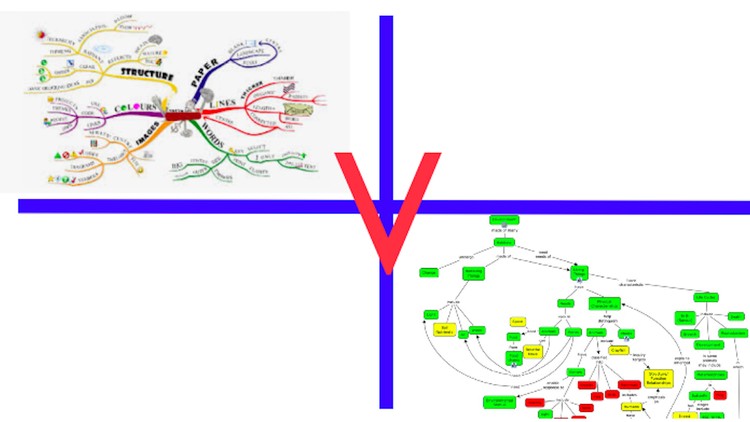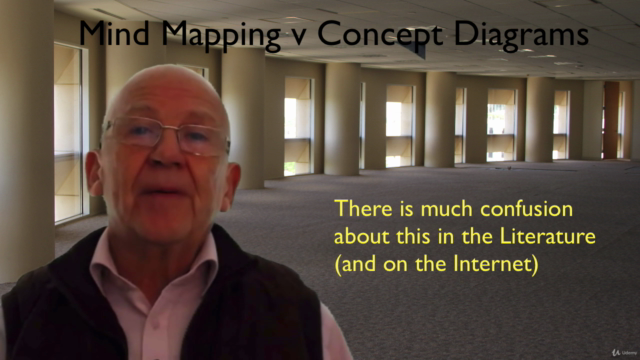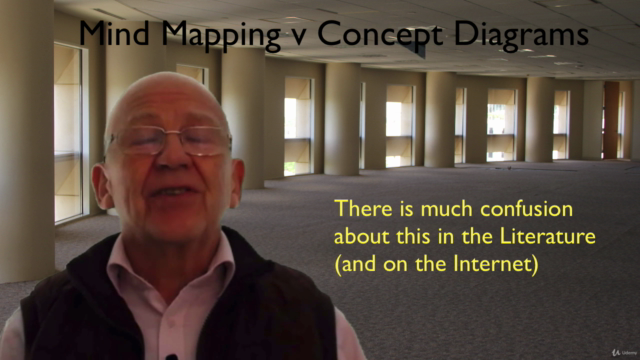Barry's Briefs: Concept Map/Diagrams compared to Mind Maps

Why take this course?
🚀 Course Title: Barry's Briefs: Mastering Mind Mapping & Concept Maps/Diagrams
🎉 Course Headline: "Mind Mapping vs. Concept Maps/Diagrams: At Least 10 Differences!" - A Deep Dive into the World of Graphic Organizers 🌐
🚀 Introduction: Welcome to a pivotal journey through the world of graphic organizers, where two powerful tools—Mind Maps and Concept Maps/Diagrams—come under the microscope. In this course, we'll explore the nuances that differentiate these two techniques, which are often mistakenly seen as one and the same. Barry's Briefs will guide you through at least 10 key differences, illuminating your understanding of how each can be used to its full potential.
🎓 What You'll Learn:
- Understanding Graphic Organizers: The common ground between Mind Mapping and Concept Maps/Diagrams and their shared purpose in knowledge representation.
- The Anatomy of a Mind Map: Characteristics and best practices for creating dynamic and effective Mind Maps.
- The Structure of a Concept Map/Diagram: The rules and conventions that govern the construction of clear and logical Concept Maps/Diagrams.
- 10 Key Differences: From complexity to use case, we'll delve into the distinct characteristics that set these two methods apart.
- Practical Applications: Real-world scenarios where Mind Maps and Concept Maps/Diagrams can be applied for optimal results.
🔍 Key Differences at a Glance:
- Purpose: One for brainstorming, the other for demonstrating relationships between concepts.
- Complexity: Mind Maps are often simpler and more visual, while Concept Maps/Diagrams are more complex and detailed.
- Directionality: Concept Maps/Diagrams explicitly show how ideas connect and relate to each other.
- Formal vs. Informal: Concept Maps have strict guidelines, whereas Mind Maps are freer in form.
- Level of Detail: Concept Maps include explicit labels on connections and a formalized notation system.
📊 Why This Matters: Knowing the differences between these two tools is crucial for effectively utilizing them in various contexts, from educational settings to professional brainstorming sessions. By understanding the strengths of each, you can choose the right tool for the task at hand and enhance your ability to organize, analyze, and present information.
📚 Course Features:
- Expert Insights: Learn from Barry Mapp, a seasoned professional with years of experience in applying graphic organizers.
- Interactive Examples: Engage with real examples that bring the differences between Mind Maps and Concept Maps/Diagrams to life.
- Practical Activities: Apply what you learn through hands-on tasks designed to reinforce your understanding.
- Flexible Learning: Access the course materials at your convenience, and learn at your own pace from anywhere in the world.
🎓 Who Is This Course For?
- Educators looking to enhance their teaching tools
- Students seeking to improve their study habits
- Trainers and facilitators aiming to refine their training materials
- Professionals who want to boost their problem-solving skills
- Anyone interested in the power of visual learning strategies
📅 Enroll Now! Embark on your journey to becoming a master of Mind Mapping and Concept Maps/Diagrams today. Unlock the full potential of these powerful graphic organizers and watch as your ability to comprehend, analyze, and communicate complex information soars to new heights! 🚀
Note: This course description is designed for an engaging online learning experience. By enrolling in "Barry's Briefs: Mind Mapping & Concept Maps/Diagrams," you will gain a comprehensive understanding of the differences and applications of these essential tools for visual learning. Sign up now to transform your approach to organizing information! 🖌️✨
Course Gallery




Loading charts...